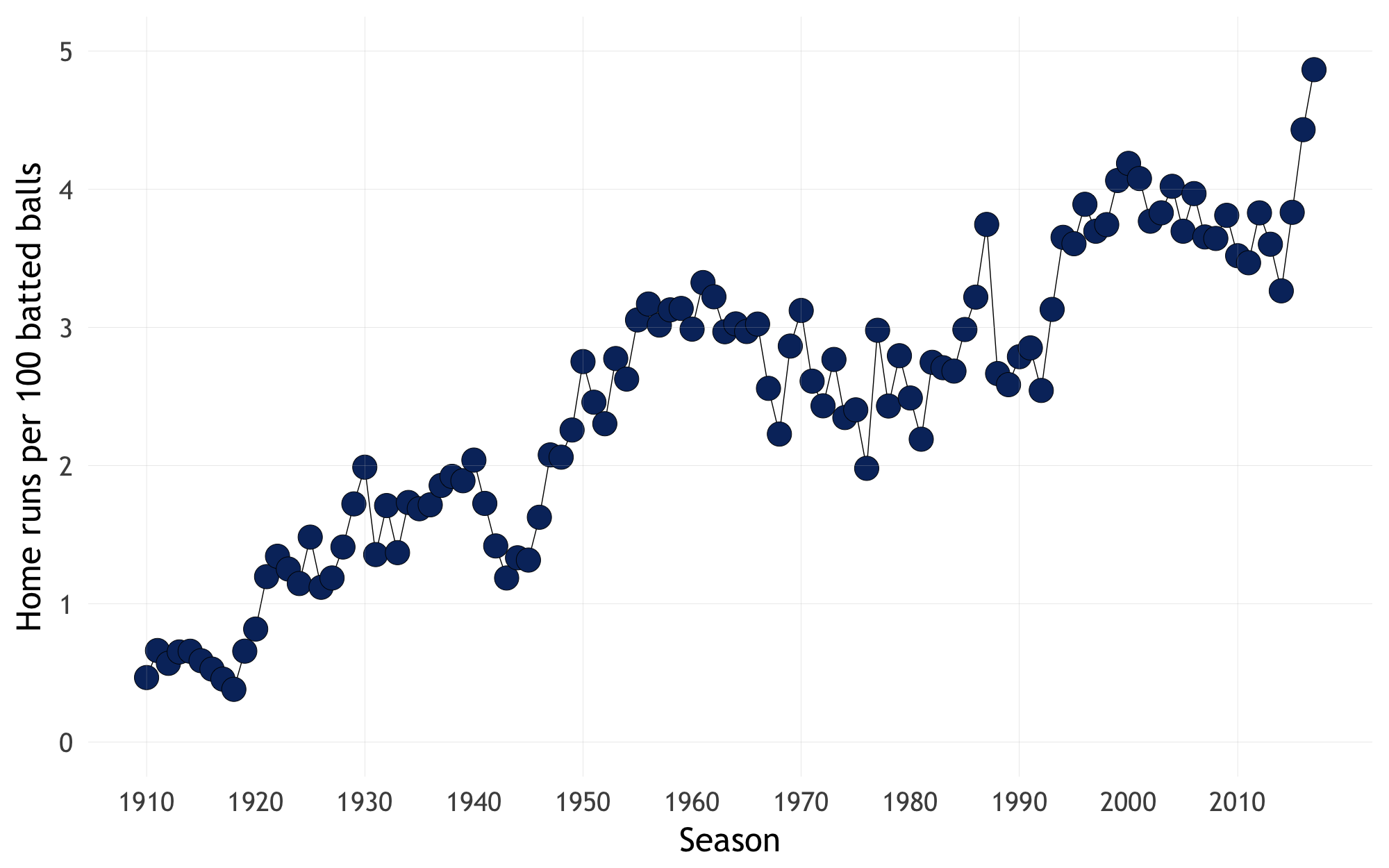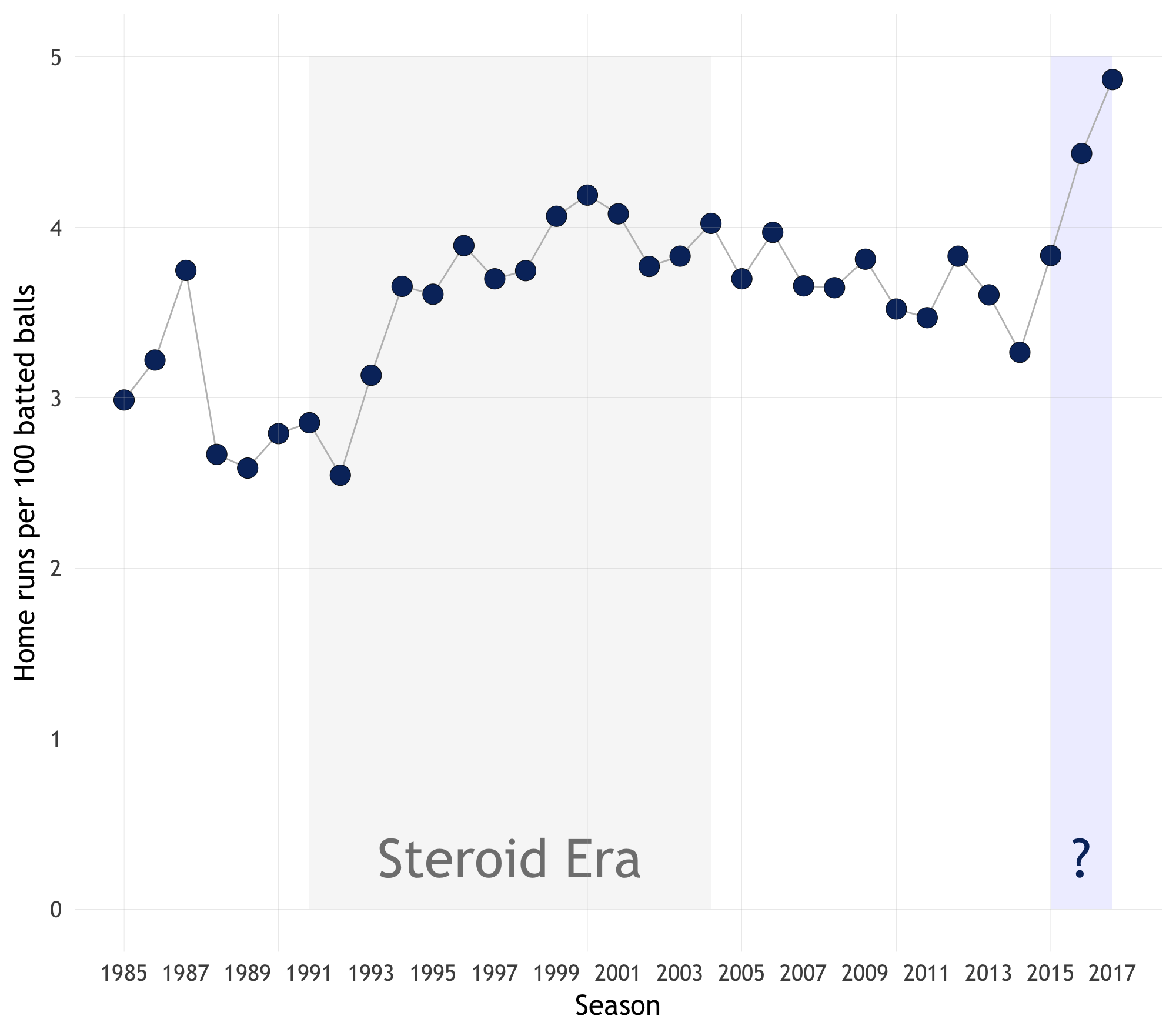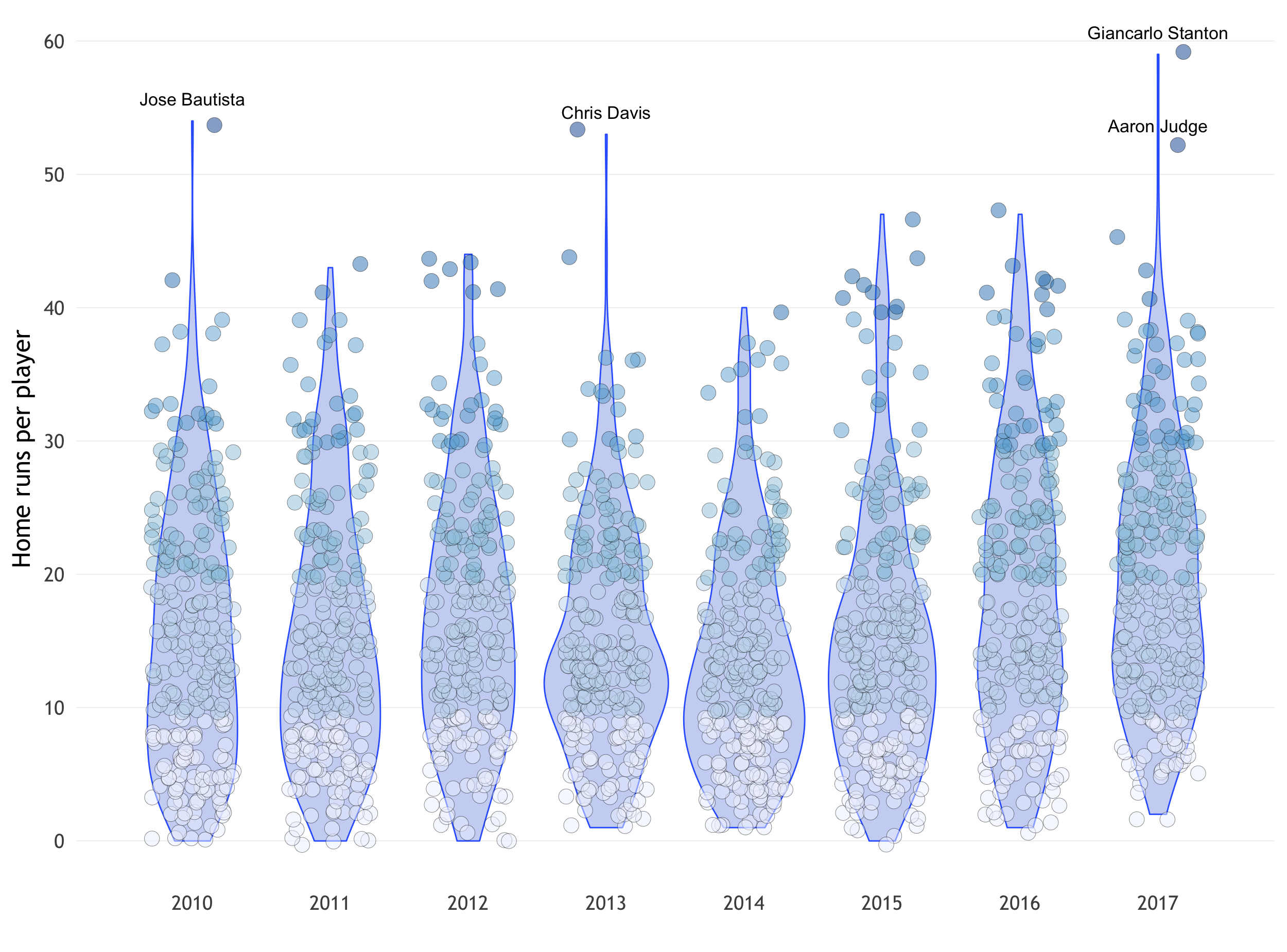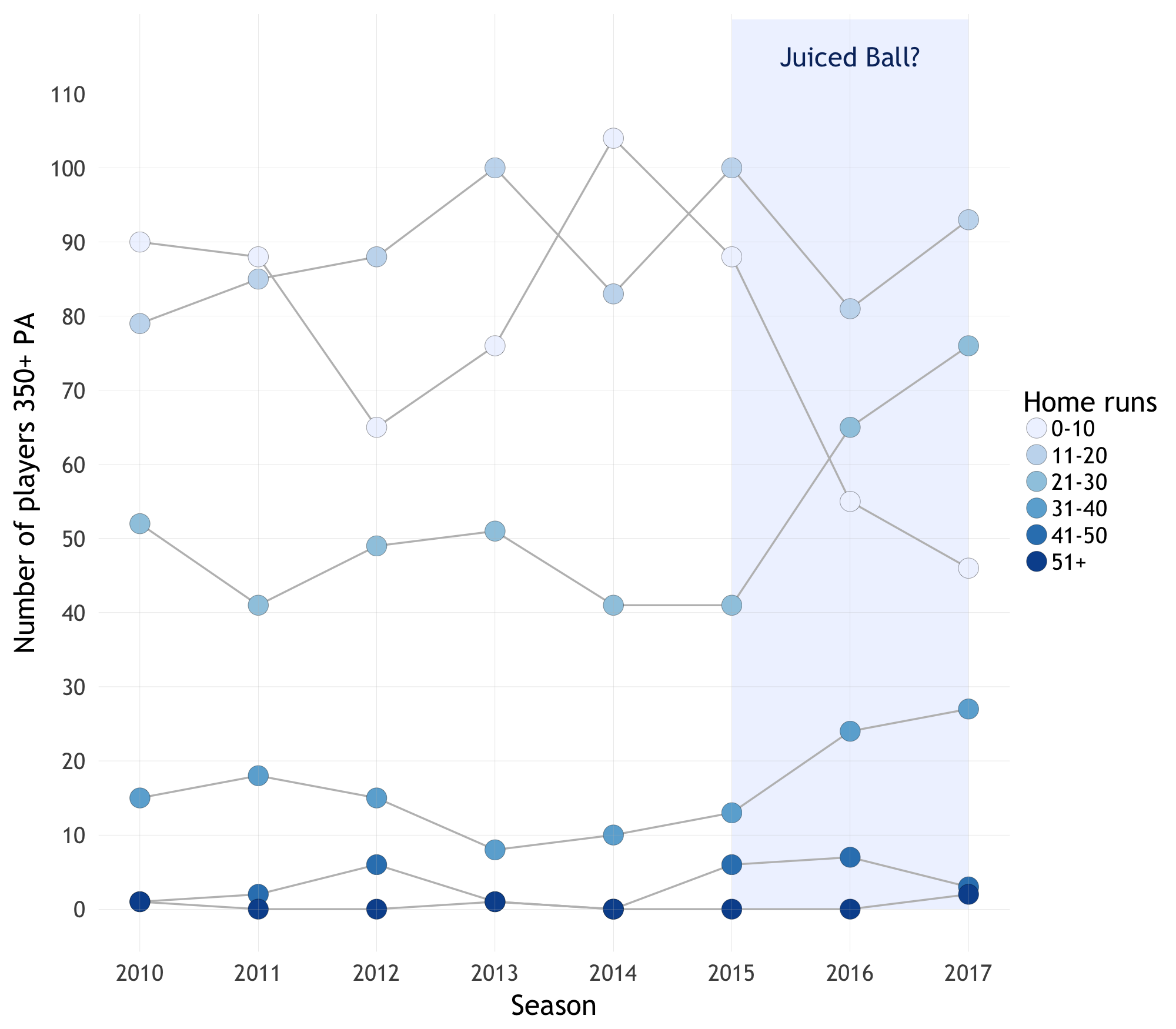
By Spencer Silva

More home runs were hit in 2017 than any other season in MLB history. Some of the game’s most well-respected observers are convinced it has something to do with a change in the ball itself.
The Ringer’s MLB correspondent Ben Lindbergh has spent a lot of time looking into the issue. He’ll chime in now and again to help us understand what’s going on.
With almost two weeks left to go, Alex Gordon of the Kansas City Royals hit the 5,694th home run of the 2017 MLB season — a new record. By season’s end, that number swelled to 6,105, 400 more home runs than the previous high. And it didn’t stop there. The 2017 postseason saw a spate of new home run records, for single-game, series and team outputs. Meanwhile, viewership and fan engagement reached new highs.
A few short seasons ago, however, that was not the case. In 2014, after several years of diminished scoring throughout the game, league commissioner Rob Manfred publicly considered measures to encourage offense. He flirted openly with several ideas, including lowering the pitcher’s mound and banning certain defense practices.
But now that point is moot. What gives? Let’s take a peek at the data.

One explanation that has gained traction over the past year is the idea that something is materially different about the MLB baseball, though the league denies as much.
The previous league-wide home run record was set in 2000, in the midst of what’s commonly referred to as the “Steroid Era.” That was when many of baseball’s most notable sluggers — Mark McGwire, Barry Bonds, Sammy Sosa — were implicated in the use of anabolic steroids, which correlated with better home run performances. The widespread use of them over that period is widely cited as evidence for the concomitant proliferation of the long ball.
Starting in 2006, however, the MLB adopted strict testing guidelines for steroids. The implementation of the new drug policy, along with innovations in defense and pitching produced a downtick in the amount of home runs in subsequent years. Then, in the midde of 2015, the home run rate spiked. Specifically, home runs per batted ball1. The ubiquity of the trend led to speculation about material changes in the game.
As you can see in the chart above, the past two seasons have eclipsed home run rates from the Steroid Era.
Some have suggested that Performance Enhancing Drugs (PEDs) may be reentering the sport, but Lindbergh and others say the league-wide rise in home runs — at such a rapid rate — suggests that steroid use is an unlikely cuplrit of the latest surge. As one minor league player player joked to me, “It’s not like there was a group text that went out one day saying ‘swing for the fences.’ ”
One of the most compelling arguments for the existence of a more homer-friendly ball is the distribution of home runs during the two-a-half seasons. If you look at the distribution of home runs in the violin-jitter plot above, you can see how the late ‘90s and early ‘2000s were marked by more players hitting lots of home runs.

But in 2016 and 2017, there are fewer outliers. Nowadays, more players are hitting between 10 and 30 home runs per season. 2 That suffused benefit, to all hitters, seems to suggest that the change is most likely in the equipment, not the players.
Visualized a different way:

Pay close attention to the intersecting lines over the past two seasons. The “0-10” and “21-30” bins have moved in opposite directions. Fewer and fewer players in the MLB are hitting less than 10 home runs per season.

Tiny changes… link